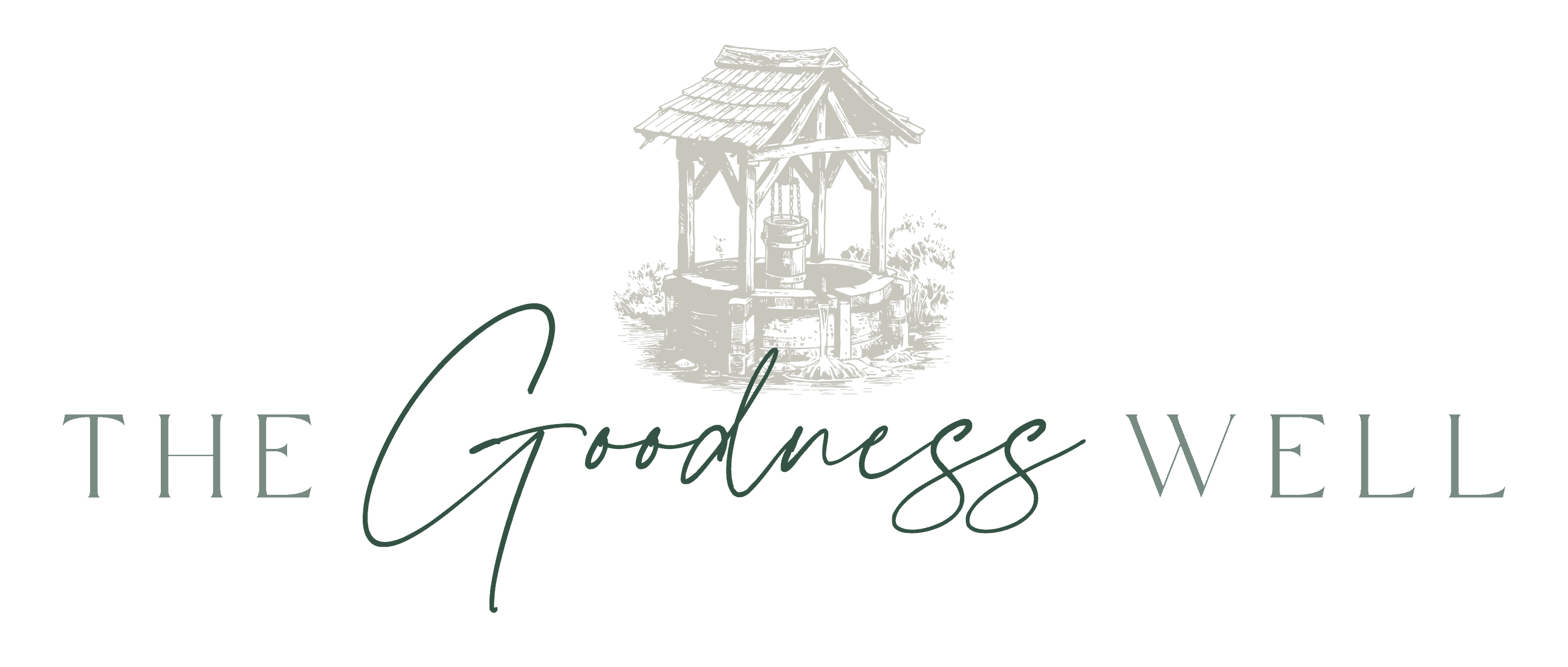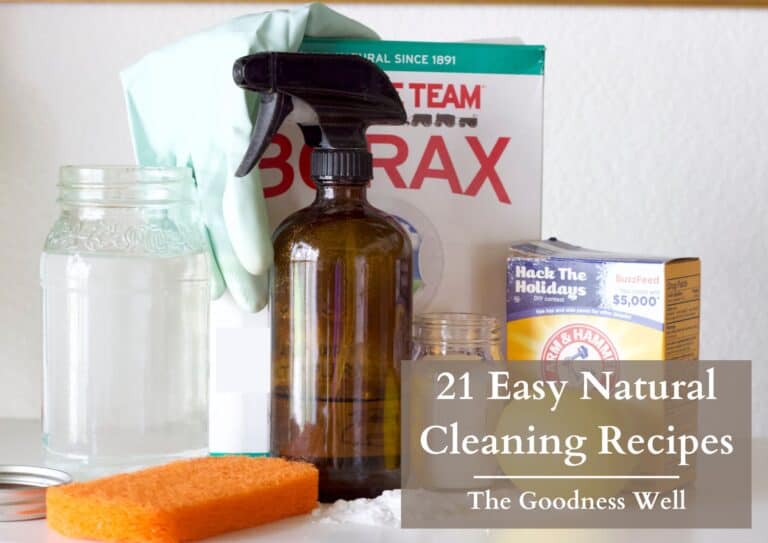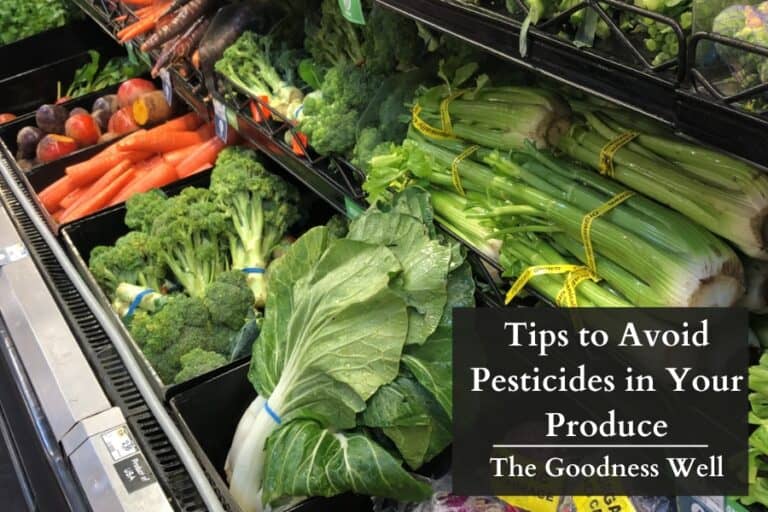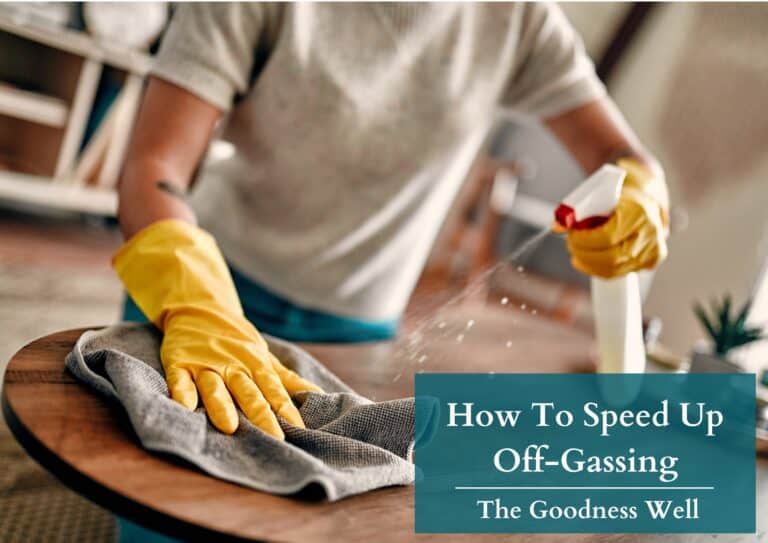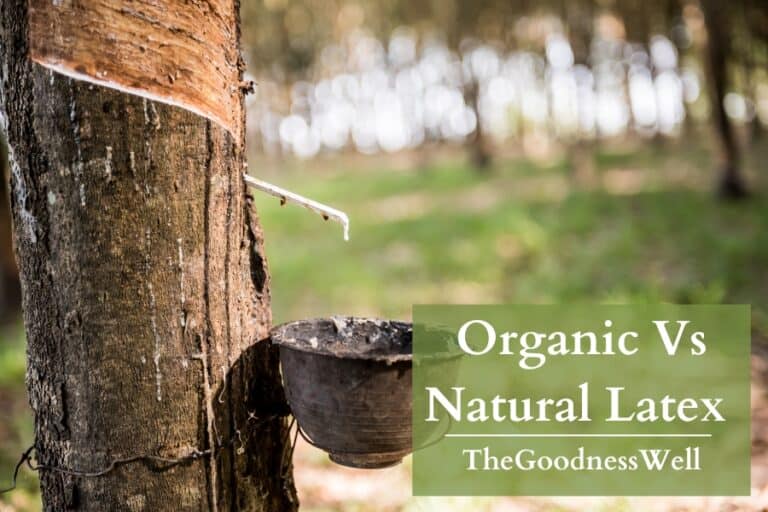The 11 Toxic Chemicals in Cleaning Products to Avoid
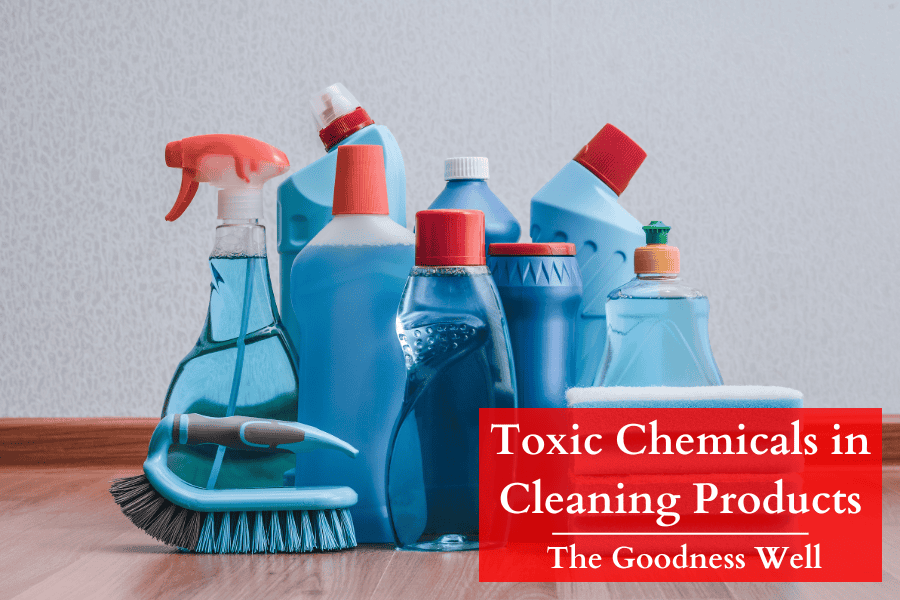
We all grew up knowing all too well the smell of bleach in the bathroom, the pine scent of floor cleaner, and that lemon fragrance that supposedly meant “clean.”
For decades, we didn’t think twice about using these products in our homes. But research now reveals the truth that many conventional cleaning products contain chemicals that aren’t safe for us or our children’s health.
The American Lung Association warns that chemicals released when using cleaning supplies—particularly volatile organic compounds (VOCs)—can trigger respiratory problems, allergic reactions, and headaches.
The scary thing is manufacturers aren’t even required to list all ingredients on their labels!
In this article we’ll go over the 11 most common toxic chemicals found in most cleaning products, where it is found, and how it can affect your health.
Never mix cleaning products containing different chemicals. This can create dangerous chemical reactions that produce toxic gases. Always read labels carefully and keep products in their original containers.
1. Phthalates

Found in 🧴: Air fresheners, dish soap, scented cleaners, other products with “fragrance” listed as an ingredient, and even food packaging!
Health effects ⚠️: Phthalates are endocrine disruptors that can interfere with hormone production. Studies link them to reduced sperm count in men, birth defects, and increased risk of reproductive cancers. They may also trigger asthma and allergies.
Why manufacturers use it : Phthalates help fragrances/smells stick to surfaces and last longer and can make plastic more flexible in some cleaning tools.
How to identify it 🔍: Unfortunately, companies rarely list phthalates as an ingredient. Look for “fragrance” or “parfum” on the label, which often contains phthalates. Also, look for acronyms like DOP, DBP, and DMP, which are short for phthalate chemicals.
The term “fragrance” on a product label can legally hide a cocktail of up to 3,000 different chemicals, none of which have to be disclosed to consumers due to “trade secret protections”.
2. Perchloroethylene (PERC)
Found in 🧽: Carpet and upholstery cleaners, spot removers, and dry-cleaning solutions
Health effects ⚠️: PERC is a neurotoxin and possible carcinogen. Short-term exposure can cause dizziness, headaches, and skin irritation. Long-term exposure has been linked to kidney and liver damage and cancer.
Why manufacturers use it: Dissolves oil-based stains without damaging fabrics.
How to identify it 🔍: Listed as perchloroethylene, tetrachloroethylene, PCE, or perc.
3. Triclosan
Found in 🧴: Antibacterial dish soaps, hand soaps, and some cleaning wipes
Health effects ⚠️: Can create antibiotic-resistant bacteria. Disrupts hormone function, particularly thyroid hormones and may contribute to allergies. The FDA has banned it from certain personal care products, but it is still found in cleaning products.
Why manufacturers use it: Kills bacteria and prevents bacterial growth.
How to identify it 🔍: Usually listed as triclosan or microban.
Triclosan was once widely used as an antimicrobial in consumer products, but its use has declined due to health and environmental concerns. Some products, especially outside the U.S. or in unregulated categories, may still contain it.
4. Quaternary Ammonium Compounds (Quats)
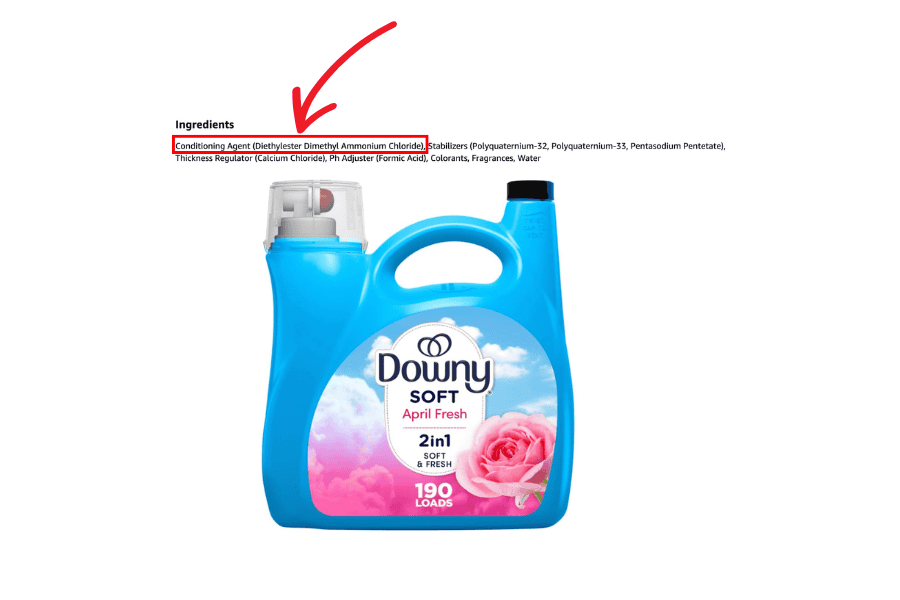
Found in 👕: Fabric softeners, dryer sheets, disinfectant sprays, and antibacterial cleaners
Health effects ⚠️: Known skin irritants and can trigger asthma attacks. Studies suggest they may contribute to respiratory disorders and reproductive issues. May also create antibiotic-resistant bacteria.
Why manufacturers use it: Strong disinfectants that kill a wide range of microorganisms.
How to identify it 🔍: Look for benzalkonium chloride, alkyl dimethyl benzyl ammonium chloride, or any ingredient ending with “ammonium chloride.”
5. 2-Butoxyethanol

Found in 🪟: All-purpose cleaners, window cleaners, and kitchen degreasers
Health effects ⚠️: Can cause severe irritation to eyes and respiratory tract. May cause liver and kidney damage with prolonged exposure. Can be absorbed through the skin.
Why manufacturers use it: Dissolves grease and adds that common “sweet” smell to many cleaners.
How to identify it: Listed as 2-butoxyethanol, butyl cellosolve, or ethylene glycol monobutyl ether.
6. Ammonia
Found in ✨: Glass cleaners, polishing products, and bathroom cleaners
Health effects ⚠️: Strong irritant that can burn the skin, eyes, throat, and respiratory system. Particularly dangerous for people with asthma or other breathing issues. Never mix with bleach as it creates toxic chloramine gas.
Why manufacturers use it: Cleans glass and shiny surfaces very well
How to identify it: Usually listed as ammonium hydroxide or simply ammonia.
Never mix ammonia with bleach! This combination creates chloramine gases that can cause respiratory damage, chest pain, fluid buildup in the lungs, and even death in high concentrations or enclosed spaces.
7. Chlorine Bleach
Found in 🚽: Bleach, bathroom cleaners, mildew removers, and some all-purpose cleaners
Health effects ⚠️: Irritates and burns the eyes, skin, and respiratory tract. Linked to respiratory issues, headaches, and potentially cancer when mixed with other chemicals. Hazardous to children and pets if ingested.
Why manufacturers use it: Very powerful disinfectant and stain remover.
How to identify it 🔍: Listed as sodium hypochlorite, chlorine, or bleach.
8. Sodium Hydroxide
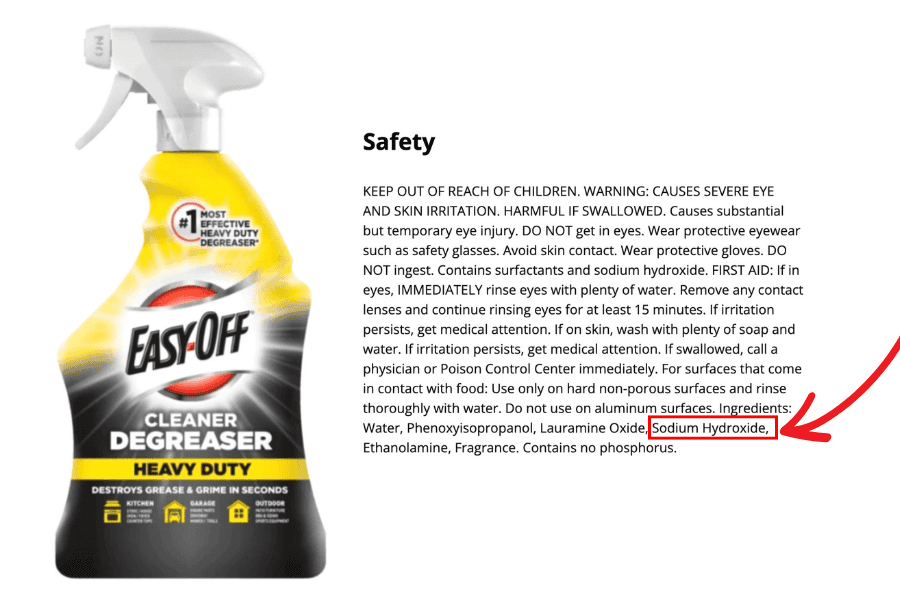
Found in 🍳: Oven cleaners, drain openers, and heavy-duty degreasers
Health effects ⚠️: Highly corrosive to skin and eyes, causing burns on contact. Inhalation can severely damage respiratory passages. Can be fatal if swallowed.
Why manufacturers use it: Breaks down tough grease, food deposits, and clogs by converting fats into soap (saponification).
How to identify it 🔍: Listed as sodium hydroxide, caustic soda, or lye.
9. Formaldehyde
Found in 🌬️: Air fresheners, dish soaps, some all-purpose cleaners (often as a preservative), and even furniture!
Health effects ⚠️: Known human carcinogen linked to nasal and throat cancers. Can cause asthma, skin irritation, and allergic reactions. Particularly harmful to those with chemical sensitivities.
Why manufacturers use it: Acts as a preservative and antibacterial agent to extend shelf life.
How to identify it 🔍: Rarely listed directly. Look for formaldehyde-releasing preservatives like quaternium-15, DMDM hydantoin, imidazolidinyl urea, and diazolidinyl urea.
10. 1,4-Dioxane
Found in 🧴: Dish soaps, laundry detergents, and multi-purpose cleaners
Health effects ⚠️: Classified as a probable human carcinogen. Can cause eye and respiratory tract irritation. Penetrates the skin and can cause liver and kidney damage with prolonged exposure.
Why manufacturers use it: Not intentionally added but forms as a byproduct during the ethoxylation process that makes harsh ingredients gentler.
How to identify it 🔍: Never listed on labels (as it’s a contaminant, not an ingredient). Likely present in products containing sodium laureth sulfate, PEG compounds, or ingredients with “eth” in their names.
11. Fragrance/Parfum
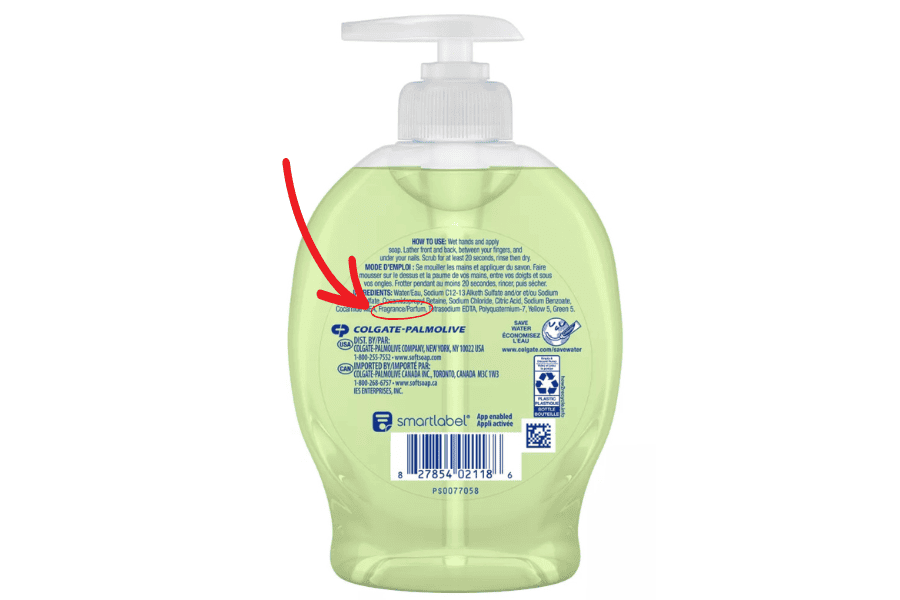
Found in 🌸: Nearly all scented cleaning products, including air fresheners, laundry products, all-purpose cleaners, and many other items like candles and self care products.
Health effects ⚠️: Can contain hundreds of chemicals, many untested for safety. Common triggers for migraines, asthma attacks, and allergic reactions. Many fragrance chemicals are respiratory irritants and potential hormone disruptors.
Why manufacturers use it: Creates pleasant scents that consumers associate with cleanliness and freshness. Masks the chemical smell of other ingredients.
How to identify it 🔍: Listed simply as “fragrance” or “parfum.” Companies aren’t required to disclose specific fragrance ingredients. Look for “fragrance-free” or “no synthetic fragrances” on labels.
Look for third-party certifications like EPA Safer Choice, Green Seal, or EWG Verified when shopping for cleaning products. These indicate the product has been screened for harmful chemicals and meets strict safety standards.
